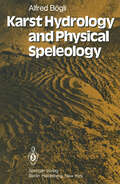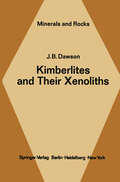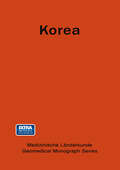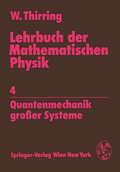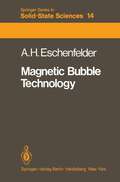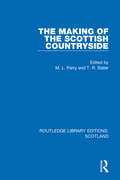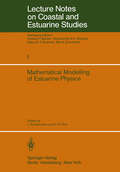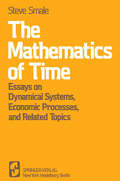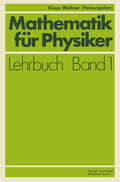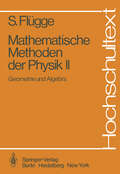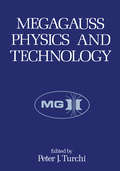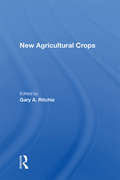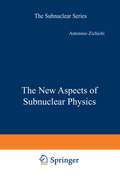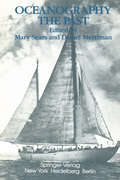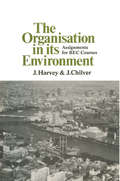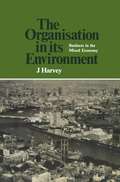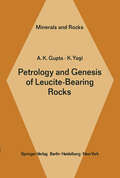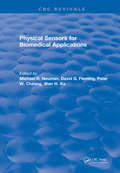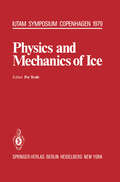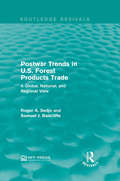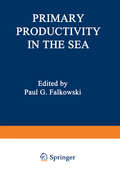- Table View
- List View
Karst Hydrology and Physical Speleology
by A. BögliThe present publication on karst hydrology and physical speleology combines two subjects which have up to now been treated separately. The two fields of knowledge have gone their separate ways, less as a result of differences in subject matter than of varying approaches. The focal point in karst hydrology lies in the description of subter ranean water with its physical and chemical properties, whereas physical speleology de scribes subterranean cavities with their contents (air, water, and sediments), which gen erally have been created by water. Such cavities can be correctly interpreted only by means of a knowledge of karst hydrology, yet they in turn yield indications of the pro perties of karst water. Karst hydrology and physical speleology are thus two aspects of the subterranean karst phenomenon and should be viewed congruently. This book addresses geologists, hydrologists, geomorphologists, geographers, and karstologists, above all speleologists, as well as all friends of caves, especially the cavers among them. Its contents must therefore appeal to two groups: on one hand to the academically trained, whether university faculty, graduates, or students, who as a rule have the necessary basic knowledge to be able to understand the theoretical com ments; on the other hand to the laymen, who have fust-hand experience from their own observations in caves, but who often do not dispose over the scientific foundation necessary for an understanding of the phenomena. Therefore occasionally more attention will be given to problems of a simpler nature and to questions of technical terminology.
Kimberlites and Their Xenoliths (Minerals, Rocks and Mountains #15)
by J. B. DawsonIn these days of information explosion and high-cost publishing, it is perhaps only reasonable for an author to convince the reading public that it is getting something worth reading. After all, intense research into the upper mantle over the past two decades has already resulted in a number of volumes on kim berlites and their xenoliths. So why yet another one? First, in this book I have concentrated on kimberlite as an individual rock-type and a sampler of the upper mantle, in the hope of complementing such monographs as Deep seated inclusions in kimberlites and the problem of the composition of the upper mantle by N. V. Sobolev and Geologie du Diamant by M. G. Bardet, which have concentrated more on specific aspects of kimberlite and upper mantle geology; as a result I have not attempted to describe diamond prospecting and mining and, although I have attempted to give some of the up-to-date views on xenolith petrology, the confines of space have not permitted me to explore the complexities of the upper mantle as deeply as has Sobolev. Second, the literature is vast and I have tried to pull together for the reader the wide range of views and infor mation presented both in the recent geological literature and in recent multi-author volumes such as the Proceedings Vol umes of the two International Conferences on Kimberlite held at Capetown in 1973 and Santa Fe in 1977.
Korea: A Geomedical Monograph of the REPUBLIC OF KOREA (Medizinische Länderkunde Geomedical Monograph Series #6)
by Chin-thack SohFor over 30 years I have been engaged as a parasitolo nitz, Springer-Verlag, Heidelberg, was arranged in the pres gist in research on endemic diseases in our land. However, ence of Professor Jusatz. lt was indeed a great honor for I have been somewhat dissatisfied within my heart of me, but I also felt a very heavy responsibility; how to set hearts from the point of view of a medical person. Most of up the scheme, how to collect the materials, how to di gest, analyze and compile them in accordance with the us, myself included, handle disease sectionally, not com prehensively. Clinicians pay more attention to finding ef original goals. I frankly confess to realizing how limited fective drugs, medical scientists concentrate more effort my knowledge was at the same time. Poor editing would on clarifying pathologic etiology, and public health work result in dishonor not only to myself, but to my country ers are more concerned with environmental sanitation. as well. Now at this juncture, the point of editing, I am filled Thus, most of us generally neglect to search out the with deep emotion. In spite of limited time and knowl causal relation of a certain disease. For a disease to be established various factors must be involved: agent, ecolo edge, this manuscript will be prepared for edition at all gy, hosts, carriers, transmitters, habits, geographic and events.
Magnetic Bubble Technology (Springer Series in Solid-State Sciences #14)
by A. H. EschenfelderMagnetic bubbles are of interest to engineers because their properties can be used for important practical electronic devices and they are of interest to physicists because their properties are manifestations of intriguing physical principles. At the same time, the fabrication of useful configurations challenges the materials scientists and engineers. A technology of magnetic bubbles has developed to the point where commercial products are being marketed. In addition, new discovery and development are driving this technology toward substantially lower costs and presumably broader application. For all of these reasons there is a need to educate newcomers to this field in universities and in industry. The purpose of this book is to provide a text for a one-semester course that can be taught under headings of Solid State Physics, Materials Science, Computer Technology or Integrated Electronics. It is expected that the student of anyone of these disciplines will be interested in each of the chapters of this book to some degree, but may concentrate on some more than others, depending on the discipline. At the end of each chapter there is a brief summary which will serve as a reminder of the contents of the chapter but can also be read ahead of time to determine the depth of your interest in the chapter.
The Making of the Scottish Countryside (Routledge Library Editions: Scotland #23)
by M. L. Parry T. R. SlaterOriginally published in 1980, this book examines the evolution of the Scottish landscape from pre-historic times to the mid-nineteenth century. It considers the way in which the structural base of agriculture and the changing farming ‘system’ came to alter the Scottish rural landscape. This book, with its focus on the underlying landscape processes, gives a developmental view of landscape change. It therefore considers the crucial question of the rate and pace of landscape change and argues that the Scottish landscape was not the product of a few brief phases of quite rapid development but rather the result of a continual and gradual process of change. It also looks at the regional variation of landscape change and establishes the importance of regional linkages in the diffusion of ideas especially in new technology.
The Making of the Scottish Countryside (Routledge Library Editions: Scotland #23)
by M. L. Parry T. R. SlaterOriginally published in 1980, this book examines the evolution of the Scottish landscape from pre-historic times to the mid-nineteenth century. It considers the way in which the structural base of agriculture and the changing farming ‘system’ came to alter the Scottish rural landscape. This book, with its focus on the underlying landscape processes, gives a developmental view of landscape change. It therefore considers the crucial question of the rate and pace of landscape change and argues that the Scottish landscape was not the product of a few brief phases of quite rapid development but rather the result of a continual and gradual process of change. It also looks at the regional variation of landscape change and establishes the importance of regional linkages in the diffusion of ideas especially in new technology.
Mathematical Modelling of Estuarine Physics: Proceedings of an International Symposium Held at the German Hydrographic Institute Hamburg, August 24–26, 1978 (Coastal and Estuarine Studies #1)
by Jürgen Sündermann K. P. HolzIn Honor of Prof. Walter Hansen on Occasion of his 7o. Birthday
The Mathematics of Time: Essays on Dynamical Systems, Economic Processes, and Related Topics
by Steve SmaleMathematik für Physiker: Basiswissen für das Grundstudium der Experimentalphysik (Lehrbuch Informatik #1)
by Klaus WeltnerMegagauss Physics and Technology
by Peter J. TurchiThe generation and use of megagauss magnetic fields have been subjects of research and development in laboratories around the world for over a quarter of a century. Research goals have included the development of compact, short-pulse, electrical power sources and the production of ultrahigh magnetic field strengths over significant experimental volumes. Energies measured in megajoules, currents in megamperes and timescales of microseconds are not uncommon in such work. Phase changes, insulator breakdowns, and local des truction of the apparatus are also frequently encountered. Some efforts have involved the use of high explosive systems, developing methodologies rather distinct from those of a normal physics laboratory. Manipulation of magnetic flux to exchange energy between high speed, electrically conducting flows and high strength electromagnetic fields remains, of course, a basic interaction of classical physics. The remoteness of the necessary experimental sites (at least in many instances) and the various national concerns for security of defense-related research have often limited the flow of information between investigators of separate organizations, working in common areas of technical concern. Occa sionally, however, it has been possible for the community of scientists and engineers engaged in work on high magnetic fields and related high energy den sity systems to gather together and exchange results and plans, successes and failures. The first such international gathering was in 1965 at the Conference on Megagauss Magnetic Field Generation by Explosives and Related Experi ments, Frascati, Italy.
New Agricultural Crops
by Gary A RitchieCurrent and projected worldwide shortages of energy, fertilizer, and irrigation water, coupled with a rapidly expanding population, are prompting agricultural scientists to seek, identify, and develop new crop species. Such crops should be energy- and water-efficient, well adapted to marginal lands, suited to intensive culture, and productive of ma
New Agricultural Crops
by Gary A RitchieCurrent and projected worldwide shortages of energy, fertilizer, and irrigation water, coupled with a rapidly expanding population, are prompting agricultural scientists to seek, identify, and develop new crop species. Such crops should be energy- and water-efficient, well adapted to marginal lands, suited to intensive culture, and productive of ma
The New Aspects of Subnuclear Physics (The Subnuclear Series)
by Antonio ZichichiIn August 1978 a group of 80 physicists from 51 laboratories of 15 countries met in Erice to attend the 16th Course of the International School of Subnuclear Physics. The countries represented at the School were: Austria, Denmark, Federal Republic of Germany, Finland, France, Israel, Italy, the Netherlands, Sweden, Switzerland, South Africa, Turkey, the United Kingdom, The United States of America, and Yugoslavia. The School was sponsored by the Italian Ministry of Public Education (MPI) , the Italian Ministry of Scientific and Technological Research (MRSI) , the North Atlantic Treaty Organization (NATO), the Sicilian Regional Government, and the Weizmann Institute of Science. As usual, the Course was devoted to a review of the most out standing problems and results in Subnuclear Physics, with particular emphasis on the new aspects; there were mainly two: supersymmetry and electroweak interactions. In his famous lecture at Erice in 1967, Sid Coleman reviewed "All possible symmetries of the S matrix. " All but one, namely that which tells you: if you have a fermion you must have a boson. This is super symmetry , and this produces the superspace, i. e. an entity which has not only the Einstein-"bosonic" coordinates, but also "fermionic" coordinates. From superspace we get supergravity; and this means that one day we should be able to detect not only the graviton (with spin 2) but also the gravitino (spin 3/2). If we add "flavour", "colour", and "family" as other intrinsic degrees of freedom, we get extended supergravity.
Oceanography: Proceedings of the Third International Congress on the History of Oceanography, held September 22-26, 1980 at the Woods Hole Oceanographic Institution, Woods Hole, Massachusetts, USA on the occasion of the Fiftieth Anniversary of the founding of the Institution
by M. Sears D. MerrimanThis volume, "Oceanography: The Past," is the Proceedings of the Third Inter national Congress on the History of Oceanography, organized under the auspices of the Woods Hole Oceanographic Institution at Woods Hole, Massachusetts, USA, September 22-26, 1980. The Congress is a part of the year-long celebration of the Fiftieth Anniversary of the founding of the Woods Hole Oceanographic Institution. It will be followed by an Assembly, September 29 -October 2, in which invited speakers will address the question, ''Will we use the oceans wisely-the next SO years in oceanogra phy?" The papers from the Assembly will also be published by Springer-Verlag as "Oceanography: The Present and Future," a companion volume to this book. The First International Congress on the History of Oceanography was held at the Musee Ocean~graphique in Monaco, December 12-17, 1966. It coincided with the centennial of the beginning of the distinguished career of Prince Albert I as a student and patron of oceanography, for it was in 1866 that he first went to sea-on the armored frigate Tetuan of the Royal Spanish Navy. The results of this Congress were published as 57 papers in the Bulletin de l'Institut Oceanogra phique (special no. 2, vols. 1-3, pp. XLII + 807, 1968).
Petrology and Genesis of Leucite-Bearing Rocks (Minerals, Rocks and Mountains #14)
by A. K. Gupta K. YagiPhysical Sensors for Biomedical Applications
by Michael R. NeumanThe material in this book is based upon a two-day workshop on solid state physical sensors for biomedical applications held in Huron, Ohio, December 8-9, 1977. The individual sections of the book are based upon presentations made by the authors at the workshop. Each presentation was transcribed and given to the authors for revision. Also, transcribed, are the discussions had following each presentation.
Physical Sensors for Biomedical Applications
by Michael R. NeumanThe material in this book is based upon a two-day workshop on solid state physical sensors for biomedical applications held in Huron, Ohio, December 8-9, 1977. The individual sections of the book are based upon presentations made by the authors at the workshop. Each presentation was transcribed and given to the authors for revision. Also, transcribed, are the discussions had following each presentation.
Physics and Mechanics of Ice: Symposium Copenhagen, August 6-10, 1979, Technical University of Denmark (IUTAM Symposia)
by P. TrydePostwar Trends in U.S. Forest Products Trade: A Global, National, and Regional View (Routledge Revivals)
by Roger A. Sedjo Samuel J. RadcliffeBy the end of World War II, the United States had become well integrated into the world markets for forest products. No longer can domestic prices of forest products be viewed as being wholly determined by domestic demand and supply, nor even by North American supply and demand, but must be viewed in a worldwide context. Originally published in 1980, this work provides a comprehensive overview of the nature of global forestry, particularly as it pertains to international trade flows of forest products, and analyses the role of the United States in a global context. This is a valuable resource for any student or researcher interested in environmental studies, global trade relations, and foreign market development.
Postwar Trends in U.S. Forest Products Trade: A Global, National, and Regional View (Routledge Revivals)
by Roger A. Sedjo Samuel J. RadcliffeBy the end of World War II, the United States had become well integrated into the world markets for forest products. No longer can domestic prices of forest products be viewed as being wholly determined by domestic demand and supply, nor even by North American supply and demand, but must be viewed in a worldwide context. Originally published in 1980, this work provides a comprehensive overview of the nature of global forestry, particularly as it pertains to international trade flows of forest products, and analyses the role of the United States in a global context. This is a valuable resource for any student or researcher interested in environmental studies, global trade relations, and foreign market development.
Primary Productivity in the Sea (Environmental Science Research #19)
by Paul FalkowskiPrimary productivity in the sea accounts for ~30% of the total global annual production. Holistic understanding of the factors determining marine productivity requires detailed knowl edge of algal physiology and of hydrodynamics. Traditionally studies of aquatic primary productivity have heen conducted hy workers in two major schools: experimental laboratory biology, and empirical field ecology. Here an attempt was made .to hring together people from both schools to share information and con cepts; each author was charged with reviewing his field of exoer tise. The scope of the Symposium is broad, which we feel is its strength. We gratefully acknowledge financial support from the Depart ment of Energy, the United States Environmental Protection Agency, the National Oceanic and Atmospheric Administration, including the NMFS Northeast Fisheries Center and the MESA New York Bight Project. Thanks are due to Mrs. Margaret Dienes, with out whose editorial skills this volume could not have been pro duced, and to Mrs. Helen Kondratuk as Symposium Coordinator. Finally, we wish to record our indebtedness to Dr. Alexander Hollaender for his tireless efforts and valuable advice in sup porting all aspects of this Symposium.
